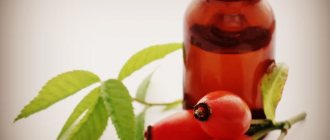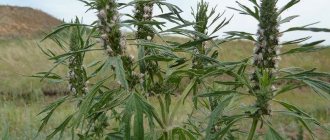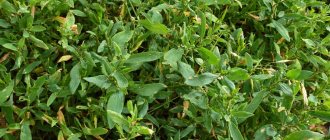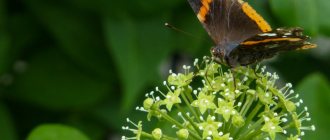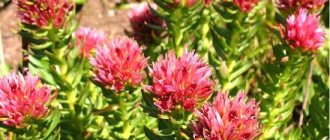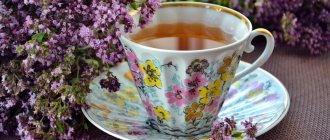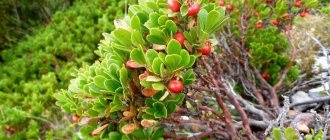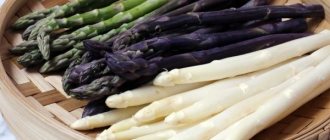Hawthorn is a tall shrub from the Rosaceae genus. It grows in temperate latitudes and grows wild in North America and Eurasia. On the territory of the Russian Federation, two types are most common: large-fruited hawthorn and blood-red hawthorn (popularly known as the so-called garden hawthorn, the benefits and harms of which will be discussed). No less famous is the black hawthorn, which grows in the Czech Republic, Hungary and the Balkan Peninsula.
It is a valuable medicinal plant, planted for decorative purposes, and is considered a good honey plant.
Wild hawthorn berries were used for health benefits back in Ancient China and Asia, first to treat diarrhea, and then to improve the functioning of blood vessels and the heart. Cultivated plant species were bred in the 16th century.
What does hawthorn help with and how is it useful, how to take it correctly and to whom herbal medicine with plant preparations can cause harm, read our new article.
Medicinal properties of hawthorn
All parts of the plant have medicinal value, the greatest are the flowers and fruits of hawthorn. Various preparations are made from leaves, bark, flowers, young twigs and fruits (dry and fresh), both in pharmacology and in folk medicine. Fresh fruits are a good raw material for jam, preserves, marmalade and even wine. Dried fruits are a common component of teas and herbal infusions.
Dried and frozen hawthorn fruits contain almost all the phytonutrients found in fresh berries.
Hawthorn has the following medicinal properties:
- cardiotonic;
- venotonic;
- vasodilator;
- hypotensive;
- hypocholesterol;
- antispasmodic;
- sedative;
- cleansing;
- immunomodulatory;
- astringent;
- anti-inflammatory;
- antiseptic;
- diuretic;
- antimicrobial;
- vitaminizing;
- antioxidant;
- tonic.
The beneficial properties of hawthorn for the heart and blood vessels, the most common reason for its use, are as follows:
- has a vasodilating effect;
- tones the myocardium;
- ensures the supply of oxygen in the required quantity;
- reduces the frequency but increases the strength of heart contractions;
- normalizes rhythm;
- reduces the excitability of the heart;
- improves coronary blood flow.
Eliminates symptoms of mild forms of tachycardia and atrial fibrillation. Normalizes cholesterol levels and blood clotting parameters, prevents atherosclerotic plaques. Eliminates vascular spasm.
It has been proven that hawthorn has a calming effect without inhibiting the central nervous system, reduces the excitability of the nervous system, and helps normalize sleep. The antioxidant effect allows the plant to be used to prevent the formation of tumors (malignant and benign), increase immunity and restore strength after illnesses.
Hawthorn has a positive effect on all body systems and is indicated for the following diseases and conditions:
- dizziness;
- insomnia;
- migraine;
- neurasthenia;
- constriction of blood vessels in the brain;
- arterial hypertension;
- heartache;
- coronary insufficiency;
- angina pectoris;
- atherosclerosis;
- increased blood cholesterol levels;
- diabetes;
- obesity;
- hyperfunction of the thyroid gland;
- biliary dyskinesia;
- pathologies of the liver and gall bladder;
- dyspnea;
- infertility (male and female);
- climacteric disorders;
- prostatitis;
- poisoning;
- intoxication;
- diarrhea;
- hypovitaminosis;
- rheumatism;
- allergy;
- epilepsy.
Features of a medicinal plant
Hawthorn is a deciduous, semi-evergreen, tall shrub (rarely a small tree) from the Rosaceae family.
In the wild, it occurs either singly or in compact groups. His “favorite” places are forest edges, clearings, clearings, and screes. In excessively moist soil, hawthorn roots can rot, so it grows mainly in deep, moderately moist and well-drained soil. The perennial plant is unpretentious, so homeowners willingly use it for decoration. Delicate hawthorn flowers are attractive in spring, and tart red fruits are attractive in autumn. Both of them have medicinal properties. So, the plant not only decorates gardens, but is also used to combat various diseases.
Chemical composition
Fresh fruits contain:
- vitamins (ascorbic acid, tocopherols, K, PP) and carotenoids;
- minerals (magnesium, iron, aluminum, potassium, calcium, copper, cobalt, molybdenum, hydroxide, iodine, manganese);
- choline and acetylcholine;
- triterpene acids: oleanic acid – tones and enhances blood supply to the heart and brain;
- ursolova - has a wound-healing and anti-inflammatory effect;
- chlorogenic - normalizes kidney and liver function, has a choleretic effect.
- quercitrin – reduces the permeability of the vascular wall, improves the elasticity of capillaries. Antioxidant;
- hyperoside - improves myocardial contractility and cardiac output;
Possible side effects
Systemic side effects during the treatment of hawthorn are not excluded, since its bioactive substances are absorbed into the blood and distributed to all organs and tissues. They are observed rarely, usually when the dosage regimen determined by the doctor is not followed or when the decoction, tea, or infusion is inappropriately taken. Systemic reactions are clinically manifested as follows:
- nausea;
- increased heart rate;
- drop in blood pressure;
- drowsiness;
- dizziness;
- headache;
- flatulence;
- disorders of intestinal motility.
Local adverse reactions are manifested by angioedema and irritation of the skin and mucous membranes. If any negative effect occurs, you should stop using hawthorn and seek medical help to eliminate symptoms.
Harvesting hawthorn
For harvesting, raw materials should be collected from healthy plants without mold, dry branches and pests growing away from highways and the city.
Fresh hawthorn
Freshly picked fruits can be stored in the refrigerator on the fruit and vegetable rack in a ventilated tray. Berries should not be washed before storage - it is better to do this immediately before consumption. This method allows you to preserve hawthorn for several weeks or more.
Freezing
The berries should be sorted, washed and dried, then placed in a plastic bag or container and placed in a deep-freeze freezer (-18 C). Berry puree is frozen in the same way.
Frozen fruits retain all their properties for 1 year. When frozen, tannins are destroyed and the berries become less tart. Repeated freezing of berries is unacceptable, so it is better to harvest hawthorn in portions, in small bags.
Drying
Dry raw materials can be bought at a pharmacy, but it is better to prepare them yourself, starting from the end of September until the frosts. Ripe fruits are bright red, orange or yellow.
- Sort the berries, rinse and dry, arrange in one layer on a wire rack or baking sheet and place in a well-ventilated place. Hawthorn dries naturally within 5-7 days. You can dry the fruits in an electric dryer at temperatures up to 60 C or in an open oven, setting the temperature to 30 C. Dried fruits lose 3-4 times in volume and weight, acquire a specific smell and bitter taste.
- Corymbose inflorescences and buds are also suitable for harvesting, but the ovary is not. Hawthorn blooms in late May-early June: profusely, but not for long, only 4-7 days. Dry in ventilated attics.
Dry raw materials are stored in glass jars or canvas bags. Dried fruits and flowers retain their properties for 2 years - this is official data, but traditional healers claim that the period is much longer, up to 8 years.
Hawthorn jam
Numerous jam recipes involve boiling the berries, during which most of the beneficial substances are destroyed. Rather, such products are a delicacy rather than a medicine.
Infusion for long-term storage
This is a useful analogue to compotes that require boiling the berries. Dried flowers are mixed with boiling water in a 1:1 ratio (1 glass of raw material per 1 glass of water), left for 30 minutes, cooled, filtered and poured into sterile jars, then rolled up.
Hawthorn wine
A useful product that, when consumed in moderation, protects against colds, maintains the tone of coronary vessels, accelerates metabolism, and helps in the treatment and prevention of neuroses. Recommended for cholesterol (high blood levels).
Pre-make the starter: about 70 gr. Place unwashed raisins in a glass bowl and add 50 grams. sugar and 200 ml water. Cover with a cloth and leave warm. The starter is ready when it starts to foam, sizzle and smell slightly fermented.
Frozen, unwashed hawthorn fruits (this is important) weighing about 2.5 kg are placed in a clean and dry sterile glass container, filled with syrup obtained from 5 liters of water and 500 grams. sugar and introduce the starter. It is important that there is about 25% free space for gases to escape. Place in a room with a temperature of 18-24 C, put on a glove pierced in several places. After 3 days, drain 500 ml of wort, dilute 1 kg of sugar in it and add it again to the container with wine. After 7 days, filter the wine, add 500 g. sugar and stand for another 30-35 days. When the wine stops fermenting and emitting gas, it becomes transparent - it can be consumed. The output is about 5 liters of wine, which should be packaged in clean bottles and placed in a cellar for storage (good for 3 years). Take 100 ml 1-2 times a day.
How to use berries
Dried berries are already ready for use - they are equally useful as long as they are stored in the house. Tinctures, teas, and vitamin solutions for external use are prepared from the dried product.
Tinctures and tea can be drunk or pre-infused so that the solution is more concentrated. Another option is to grind the berries using a coffee grinder and then pour boiling water over them. After the mixture has infused, it is filtered or drunk finely ground. A cold, fortified drink is useful in summer; it also quenches thirst well.
Pharmaceutical preparations of hawthorn
In the pharmacopoeia, the flowers and fruits of hawthorn, common, and blood-red are used to obtain medicines, of which there are a lot. Let's talk about the most popular ones.
Drops with a multicomponent composition, including hawthorn extract. They have a sedative effect, stimulate contraction of the heart muscle, dilate blood vessels, and improve sleep. |
Multicomponent herbal medicine (drops and syrup). It is prescribed to relieve attacks of VSD, normalize heart rate, relieve vasospasm, eliminate anxiety and stress. |
Tablets based on extracts of hawthorn and valerian, which have a sedative effect, helping to cope with stress and nervous excitability. Recommended for astheno-neurotic conditions and functional disorders of cardiac activity. |
An elixir containing flowers and fruits of hawthorn and other plant components. It has a tonic effect, increases the body's resistance to infections, and is prescribed for the treatment of VSD. |
They are used to prepare infusions and decoctions for the complex treatment of diseases of the cardiovascular system and central nervous system, normalize sleep, and strengthen the immune system. |
Prescribed in the complex treatment of hypertension, tachycardia, angina pectoris, angioedema, neurotic diseases, and high blood cholesterol levels. |
Indicated in the complex treatment of functional disorders of the heart, arterial hypertension, ischemic disease, atrial fibrillation, angioneurosis, paroxysmal tachycardia, atherosclerosis, climacteric neurosis. |
Possible harm and contraindications
Hawthorn tincture is prepared on the basis of ethyl alcohol, so the product is contraindicated in the following cases:
- Pregnancy.
- Lactation period.
- Children under 12 years of age.
- Low blood pressure.
- Arrhythmia.
- Liver dysfunction.
- Brain diseases.
Among the side effects that hawthorn can cause are:
- Reduced blood pressure.
- Dizziness.
- Urticaria-type rash.
- Skin itching.
- Slowing heart rate.
How does hawthorn affect the pulse?
Hawthorn extract slows down the heart rate. The drug is prescribed for the treatment of tachycardia.
Traditional medicine recipes
Fresh fruits
You can consume no more than 1 glass of fresh fruits per day. Exceeding the recommended dose may lead to heart rhythm disturbances.
Fresh Juice
Freshly squeezed juice from hawthorn fruits, diluted with boiled water in a 1:1 ratio, is taken to improve blood circulation and normalize the digestive system (several teaspoons before meals).
Juice can also be prepared from thawed berries, but in this case there is no need to dilute it with water.
Berry pulp can be used for brewing as an infusion.
Vitamin tea from hawthorn
It is useful even for those who do not have indications for treatment with hawthorn. Helps saturate the body with vitamins, strengthen the immune system and heart muscle.
Take 1 tbsp. dry fruits and pour a glass of boiling water over them, cover with a lid, leave for 20 minutes and filter. Add the resulting infusion in an amount of 40-50 ml to a glass of green tea. Take 1-2 times a day.
The second recipe (it turns out more concentrated). Take 20-30 dried hawthorn fruits, a few rose hips and pour 1 liter of boiling water in a thermos and leave overnight. You can drink it in the morning.
Alcohol tincture of hawthorn
Improves heart function, recommended for atherosclerosis and high blood pressure. Prescribed as a mild sedative, for stress, as a tonic and immunomodulatory agent.
Take 1 part of dried hawthorn fruits and add 10 parts of 70° alcohol, leave in a dark, closed bottle for 21 days, filter. How to take: 30 drops, diluted in ½ glass of boiled clean water, three times a day, half an hour before meals. Course 30 days.
Hawthorn decoction
Recommended for heart neuroses, cardiac cough, nervous overload, shortness of breath, asthma, rheumatism, hypertension, heart rhythm disturbances such as atrial fibrillation. Relieves hot flashes.
Take 15 g. dry berries and pour a glass of hot water, simmer in a water bath for 15 minutes. Cool the mixture for about 45 minutes, then filter. Bring the decoction to a volume of 200 ml with chilled boiled water. Take 100 ml twice a day for 30 minutes. before meals.
Water infusion of hawthorn
Take a couple of handfuls of dry fruits, chop and brew with boiling water (1 l). Leave overnight. Take 1/3 cup 60 minutes before meals 3-4 times a day. Useful for arrhythmia, angina pectoris, increased nervous excitement.
Alcohol tincture of hawthorn for blood pressure
It is prepared from dried crushed fruits or flowers. Take 4 tbsp. vegetable raw materials, add 500 ml of vodka and leave in a dark place for 14 days. Then strain. Drink 25-30 drops diluted with water an hour before meals for hypertension and angina.
Tea balm
Recommended for heart failure. Take 100 gr. good black tea, add 2 tbsp. rose hips, 1 tsp. hawthorn fruit, 1 tbsp. motherwort herb, 1 tbsp. peppermint and 1 tsp. valerian rhizomes and chamomile flowers. Brew like regular tea. You can drink 1 glass 2 times a day.
Infusion for hypertension
Take 1 tsp. crushed hawthorn fruits, motherwort, dried cucumber and chamomile flowers. Brew a glass of boiling water and filter after 60 minutes. Take 1 tbsp an hour before meals.
Restorative agent after myocardial infarction
Patients who have had a heart attack are recommended to take half a glass of diluted hawthorn juice with 1 tsp. vegetable oil.
Remedy for weak vascular tone
Take 3 tsp. hawthorn flowers, 2 tbsp. herbs medicinal letter and pour the mixture with three glasses of cold water. Boil and leave to steep for 5 hours. Drink 1 glass an hour before meals.
Skin lotion
An aqueous infusion of hawthorn is recommended to be used as a lotion to restore the natural moisture of the skin, increase skin tone, eliminate puffiness and fine wrinkles. The infusion can be frozen and rubbed into cubes on the skin before bed and in the morning.
Precautionary measures
Care should be taken when using hawthorn leaves. After the first dose of the drug, you need to pay attention to the body's response. If no symptoms of an allergic reaction occur, treatment can be continued. Individual intolerance to hawthorn is indicated by discomfort in the digestive organs and the appearance of a skin rash. If these symptoms occur, you should immediately take an antihistamine.
Exceeding the dosage can lead to changes in heart rhythm and intestinal colic. In some cases, there is a strong decrease in blood pressure, which affects the person’s well-being. To exclude the possibility of side symptoms, you should not take medications on an empty stomach and wash them down with cool water. After a month of using the drug, it is advisable to take a break of 10 days.
Drug therapy
Most often, fruits are used in therapy. Infusions of water or alcohol, decoctions, and teas are prepared from them. Pharmacists make tablets, extracts, powders and syrups from this plant. In particular, you can find it in the composition:
- Cardiovalens;
- Kasmin (taken for tired leg syndrome);
- Kerovit;
- Kategus (from tachycardia);
- Amrita (for asthenic syndrome);
These useful drugs normalize blood clotting and reduce cholesterol levels.
During therapy, it is necessary to establish a systemic intake. Be sure to pay attention to contraindications when using.
